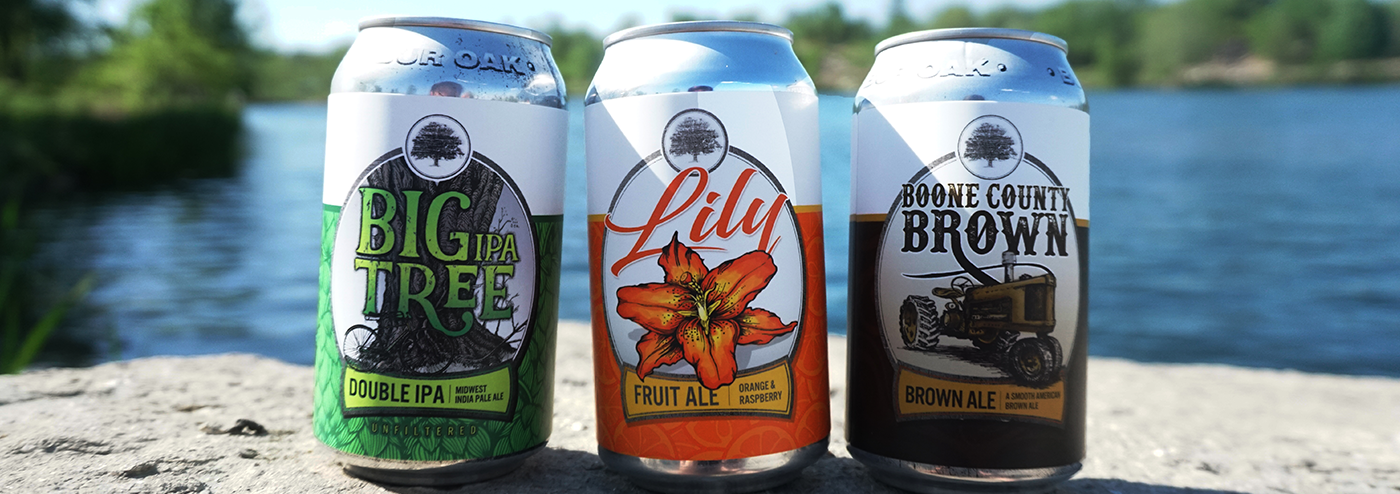Precision Marketing: Creating a Laser-Focused Brand Identity and Customer Avatars
In the vast ocean of e-commerce, pursuing customers is like a fishing expedition. Imagine you're angling for success; casting a wide, generic net might bring in a million minnows. Sure, the quantity is impressive, but each minnow holds little individual value and certainly lacks uniqueness. They're the catch that anyone can haul in.
Now, consider the approach for a more valuable, elusive catch—say, a majestic marlin or a prized bass. This pursuit isn't about the indiscriminate trawling of the waters; it requires specialized tools like depth finders, tracker boats, and carefully selected rods and reels. It’s a highly targeted approach, where understanding the habitat, behavior, and preferences of these prized fish is paramount.

Similarly, in the world of business, the value lies not in casting a wide net to attract any and all customers. The true treasure is in attracting and retaining those customers who find genuine value in what you offer—a target audience that resonates with your brand's identity and ethos. Like the skilled angler who knows that the prize catch requires patience, precision, and the right tools, a business must realize that the key to sustainable success is in nurturing and satisfying a targeted customer base, rather than chasing an endless school of minnows.
Brewing Local Loyalty: Niche Marketing in Action

Bur Oak Brewery in Columbia, Missouri, serves as a shining example of the effectiveness of a niche approach in cultivating a loyal target audience. By weaving the essence of its community into its brand strategy, Bur Oak has done more than just brew beer; it has crafted stories and landmarks into its brand identity. Names like "Big Tree," honoring Missouri's largest tree, "Old 63," a nod to a well-traveled road, and "Boone County," the brewery's home, resonate deeply with locals.
Each beer becomes more than just a beverage; it's a tribute to the community's identity and heritage that echoes the customer's own life here. This local-centric branding extends further with beers like "Clyde," named after the brewery's beloved in-house cat, adding a personal touch that endears the brand to its ideal customers.

But Bur Oak Brewery's commitment to community goes beyond clever naming. It has transformed itself into a 'third place'—a social environment separate from home and the workplace. By hosting local dance practices, meet-and-greets, performances by local bands, and generally catering to the customer experience, the brewery has become a hub of community activity and engagement. This creates a sense of ownership and belonging among the locals, turning the brewery into a communal space where people gather not just to drink beer, but to connect, share, and create memories.
The effectiveness of Bur Oak Brewery's approach, rooted in the deep connection between its brand identity and local community, serves as a powerful testament to the impact of niche marketing. This brand strategy transforms customers into active participants in a shared story, enhancing their loyalty and turning them into brand evangelists. Such a model not only elevates Bur Oak Brewery to the status of a community landmark but also sets a benchmark for how niche marketing can outperform a broader, less focused brand strategy.
This principle of niche marketing, exemplified by Bur Oak Brewery, holds significant lessons for e-commerce companies. By honing in on a specific target audience and addressing their unique wants and needs, e-commerce sites adopting a niche approach can expect visitors with a higher intent to purchase.
This strikes a stark contrast with the more generalized approach, where casual browsers may show interest but not the same level of commitment to purchase. Shifting your focus from a broad audience to a more targeted group can make a lasting impression, leading to increased customer loyalty and higher conversion rates.

Questions to Shape Your Brand: Mission, Audience, and Brand Voice
In the quest to carve out a successful niche in today’s bustling market, defining a unique brand identity is more than a luxury; it's a necessity. Just like Bur Oak Brewery, which has skillfully tapped into the essence of its local community to create a standout brand, you too can craft your distinct niche.

By intentionally defining what sets your brand apart and focusing on your unique brand story, values, and audience, you can create a brand that resonates deeply with a target customer to foster loyalty and engagement that transcends the ordinary. Let's explore how you can pinpoint and cultivate your brand's unique niche, turning the focal point of your business into a beacon for those who seek what only you can offer.
To help guide your reflection, consider the following questions:

-
What is your brand's core mission? Reflect on what drives your business beyond making a profit. What is the fundamental purpose that sets your brand apart?
-
Who is your ideal customer? Envision the characteristics of the customer who would most benefit from and appreciate your product or service.
-
What are your brand's core values? Identify the key elements that guide every aspect of your business, from product development and visual identity to customer service.
-
How does your brand solve a problem or fulfill a need? Consider what specific needs or challenges your brand addresses for your customers.
-
What is the story behind your brand? Think about the origins, struggles, and successes that have shaped your brand’s journey.
-
How does your brand personality shine through in your messaging and social media? Reflect on the tone, language, and emotions that create your brand voice.
-
What makes your brand different from competitors? Identify the unique selling points (USPs) that differentiate your brand in the market.
-
How do you want customers to feel when they interact with your brand? Envision the emotional experience you aim to create for your customers.
-
What are the long-term goals of your brand? Think about where you see your brand in the next five to ten years, and use these insights to guide your decision making.
-
How can you evolve your brand while staying true to its identity? Consider ways to innovate and grow your brand while maintaining its core essence.
The Power of Your "Why"

As you work through these questions and build out a memorable brand identity, the cornerstone of your brand strategy should be the "why" behind your business. Clarifying your brand identity by defining your why and using customer avatars is the driving force that not only guides your branding efforts for your product or service but also ensures that your brand personality remains cohesive, authentic, and resonant with your customers.
Example of a Successful Why: Patagonia

Patagonia, an outdoor clothing and gear company, stands as a paragon of a brand that effectively communicates its "why." Their mission goes beyond just selling products; they are deeply committed to environmental activism and sustainability.
This commitment is evident in everything they do, from product design and manufacturing processes to their social media marketing campaigns and corporate initiatives. Patagonia's "why" is not just a statement; it's a lived experience for its patrons and potential customers, making the brand's story not only credible but deeply inspiring.
Example of a Brand Struggling to Connect: Gap

Contrast this with Gap, a well-known fashion retailer. Gap has attempted to position itself as a proponent of sustainability by launching a separate line of eco-friendly clothing. However, this brand strategy seems superficial when considering the company's broader practices.
Gap has faced criticism for relying on subcontractors using sweatshops and underpaid labor, practices that sharply contrast with their sustainable and ethical image. This inconsistency between their sustainability claims and actual practices leads to a disconnect with consumers, especially those who value authentic and comprehensive commitment to ethical standards. Gap's struggle lies in aligning its "why" with its actions, demonstrating the importance of a business's identity being genuinely reflected in all its business operations.
In summary, your brand's "why" is not just a marketing tool; it's the heartbeat of your business goals and brand identity. It should authentically represent what you stand for and be consistently reflected in every aspect of your business. By doing so, you create a brand that not only stands out in the market but also builds a lasting, meaningful emotional connection with your customers.
Beyond Adjectives—Crafting a Dynamic Brand Identity

When it comes to building a brand identity, relying solely on adjectives is akin to painting a portrait with a limited palette. It's essential to understand that a brand identity is much more than a string of descriptive words. It's about action, about what your brand does and how it impacts the lives of your customers. Let's delve deeper into this concept.
The Pitfall of Generic Adjectives

Consider a brand described simply as practical, reliable, and of quality. While these are positive attributes, they fall short of painting a vivid picture of the brand. This approach is too generic, lacking the specificity and dynamism to truly capture the essence of the brand's value proposition. Such descriptions fail to create a tangible or memorable image in the minds of consumers, leaving the brand’s identity feeling empty and uninspiring.
A More Effective Approach: Heroic Hardware
Now, let's turn our attention to a more effective example: Heroic Hardware. This brand doesn’t just rest on the laurels of adjectives. It reaches for a deeper reason, stating, "Heroic Hardware provides practical building and crafting solutions aimed at delivering results to handyfolk of all trades. We create reliable tools and hardware with high-quality materials. We provide excellent, highly responsive customer service and are honored to be part of your work."
This is a statement teeming with life and action. It doesn’t just describe; it demonstrates. It tells a story of what the brand does—providing solutions, creating with care, and serving with excellence. This approach not only differentiates the brand, but also sets a tone, making the brand more relatable, almost person-like, and more likely to connect with a customer's life experience.
Why a Strong Brand Identity Works
Such a dynamic brand statement does more than just describe; it engages and provides clear direction. It helps the consumer visualize how this successful brand fits into their life. It’s a narrative that transforms the brand from a mere provider of goods or services to a character in the customer’s story.
This not only aids your copywriters in creating more compelling content but also builds trust with your customer base. It gives them a clearer sense of who they are doing business with, making the brand not just a choice, but a partner.

In conclusion, remember that your brand identity should be a blend of what your brand is and what it does. Move beyond mere adjectives. Infuse your brand identity with verbs, with action, with life, with your unique "why." This is how you transform a basic brand into a living, breathing entity in the market—one that resonates deeply and meaningfully with your audience.
Building Your Customer Avatar

Crafting a specific and targeted avatar is another pivotal step in building out your brand identity. This process goes beyond demographic details; it's about delving into the psyche of your ideal customer and understanding their needs, preferences, and behaviors. By defining a clear avatar, you're not only tailoring your product or service more effectively but also refining your brand's voice and messaging to resonate deeply with this audience. Your avatar embodies the type of voice your perfect customer will listen to and resonate with.
To assist you in this crucial task, our ultimate guide offers a comprehensive approach, blending the best of both worlds—advanced AI tools and traditional research methods.
Get your FREE customer avatar worksheet here!
This avatar becomes the compass guiding your marketing efforts, ensuring that every aspect of your brand is aligned with the values and desires of your target audience.
Be Dynamic: Evolving with Your Target Audience
In a world where change is the only constant, adopting a dynamic and sustainable approach to your brand identity is essential. People evolve, their preferences shift, and their needs transform. In response, a strong brand should also be in a state of fluid evolution.
Embrace Change, Embrace Growth

The key to maintaining relevance in an ever-changing market is to stay attuned to these shifts. This means consistently monitoring key metrics and sales data to gauge trends and patterns.
However, numbers only tell part of the story. Equally important is to engage directly with customer feedback. Pay close attention to reviews, emails, social media interactions, and any other form of correspondence between your company and customers. These are the unfiltered voices of the people who matter most to your business, providing invaluable insights into their experiences, expectations, and how these might be changing over time.
Adaptation is Crucial

When you notice a shift in your customers' behavior or preferences, it’s a signal for your brand to adapt. This could mean reaching out to your graphic designer to tweak your marketing strategy, adjusting your product or service, or even overhauling your brand messaging.
For instance, if your customers are increasingly valuing sustainability, it’s time to reflect this authentically in your brand’s practices and communication. Sometimes, the change might be more drastic, requiring you to shift your focus to a different demographic altogether. This doesn't mean abandoning your core brand strategy but rather aligning it with the evolving landscape of your audience.
Take Apple, for example. Initially a personal computer and consumer electronics company, Apple has increasingly shifted towards digital services. The launch of services like Apple Music, Apple TV+, Apple Arcade, and the App Store signifies a transition from a purely hardware-based company to a business with significant investments in digital and content creation and services. In doing so, Apple has kept pace with and even anticipated shifts in its consumers' needs, thereby maintaining its position as a strong brand and leading technology company.

Stay True, Yet Flexible
While it's important to be dynamic, it’s equally crucial to maintain the core essence of your brand identity. The challenge lies in finding the balance—evolving with your customers while staying true to your brand's solid foundation. This is where your brand’s "why" becomes a guiding light, ensuring that even as you adapt and grow, you remain anchored in what fundamentally defines your brand and company.

Conclusion
In wrapping up our exploration of building a compelling brand identity, it's crucial to remember that your brand extends beyond just a collection of flattering adjectives. It's about action and purpose—what your brand does and why it does it. In the bustling marketplace, the companies that stand out are those with a story to tell and a mission to fulfill. Your brand's narrative should be a reflection of these key elements together, communicated through every interaction with your customers.
Embracing a targeted approach in your brand strategy is not just about excluding certain demographics; it's about focusing your efforts where they count the most. In a world where resources are limited, this approach makes sense and ensures that your efforts are not diluted. Let others chase after the broad masses. The goal of your company should be to connect deeply with a specific group whose values and needs align closely with what your brand offers.
Honesty and transparency are the bedrock of any lasting relationship, and this holds true for the relationship between your brand and your customers. Be authentic in your communications, product or service offerings, and customer interactions. This authenticity fosters trust, which is indispensable in retaining customers.
As you move forward, keep these principles in mind. Your brand is more than a label; it's a living entity that thrives on meaningful connections, honest interactions, and strategic focus. With these in place, your brand is not just positioned for success; it's poised to make a significant impact.
Ready to elevate your Amazon presence or revamp your e-commerce brand strategy? Don't navigate these waters alone! Let Marketing by Emma be your guide. Our team of experts is here to provide you with a free comprehensive analysis of your current Amazon listing, offering insights and strategies to enhance its effectiveness on the path to long-term success. Or, if you're looking to overhaul your e-commerce marketing approach, we're equipped to help you craft a brand strategy that resonates with your audience and drives results. Contact us today, and let's work together to take your brand to the next level!


Leave a comment
Please note, comments must be approved before they are published